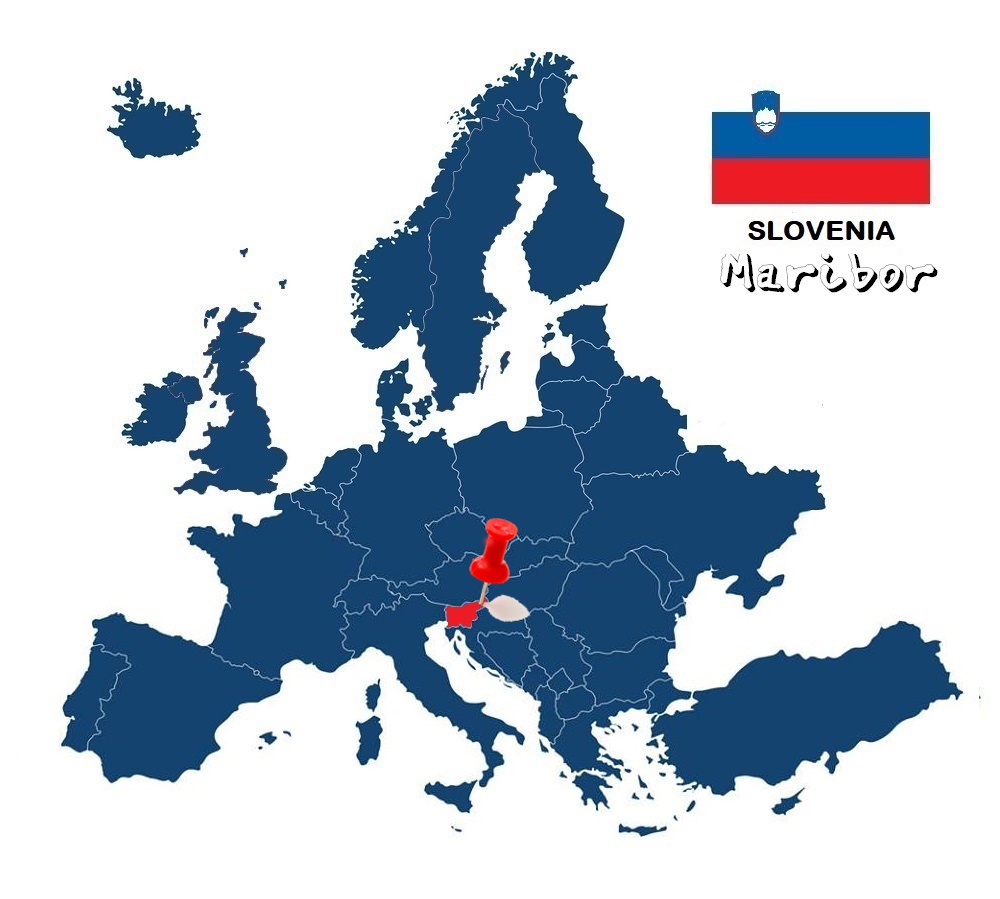
Maribor may not be the most famous or the most beautiful city in the country, but it is an excellent starting point for those who want to discover the features of eastern Slovenia. The beautiful historical center, the green hiking trails and the neighboring ski slopes make Maribor an interesting tourist choice for every type of traveler.
A few words about the city
Maribor is the second largest city in Slovenia with 117,546 inhabitants, after the capital Ljubljana and the biggest in the region of lower Styria. It is located in the north-eastern part of the country, very close to the border with Austria and is crossed by the Drava River. It is the seat of the Roman Catholic Church of the region and was first mentioned as a castle in 1164, as a settlement in 1209 and as a city in 1254. The town was almost flattened during World War II, then turned into an industrial center, and in 2012 it was declared European capital of culture along with the Portuguese Guimaraes. So I have chosen for you, what I consider to be worthy of attention for someone who is visiting the city for the first time.
Slomškov trg
I think a proper tour of the urban area of Maribor should start from Slomškov square (Slomškov trg). It is located in the center of the city and is surrounded by its most important structures.
First and most beautiful is the Cathedral of Maribor (Stolna župnija Maribor). This building is perhaps the best that the city has to show and is the seat of the Archbishop. It is dedicated to St. John and became known mainly for the Tomb of Bishop Antona Martina Slomška, the First Slovak Saint. The ancient Roman building dates back to the end of the 12th century and later developed taking its present appearance. Inside you will be able to applaud beautiful paintings, unique frescoes and impressive stained glass, while I suggest you climb the 57-meter-high bell tower for free and admire the city from above.
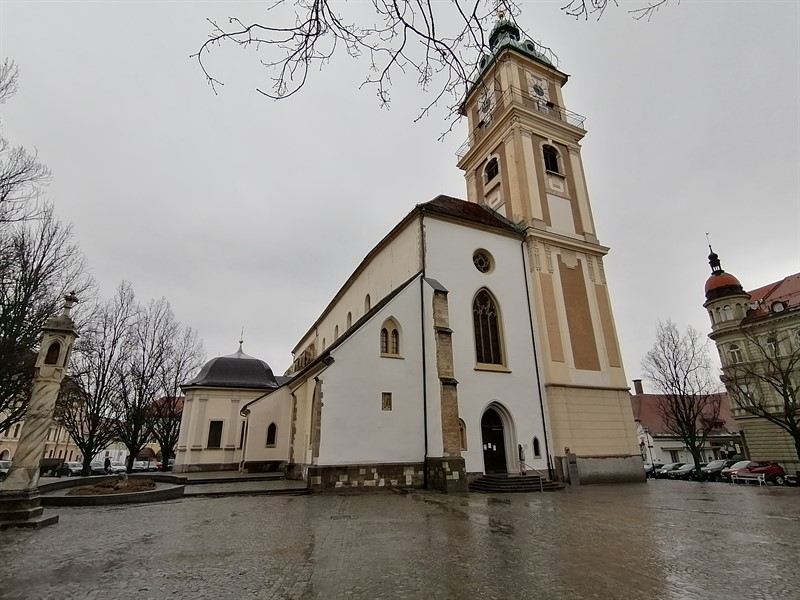
Just opposite is the University of Maribor (Univerza v Mariboru), which is the second largest in the country and has been operating since 1975! Also, in the square you will be able to admire the remarkable green Post Office (Pošta) and the National Theater (Slovensko narodno gledališče Maribor), which is illuminated in blue at night.
Glavni trg
The other square that is worth visiting in Maribor is the Central Square (Glavni trg). It is the second largest in the city and the place where yesterday meets today. This is where the Town Hall (Mariborski rotovž) is originally located, dating back to 1515 and renovated in the middle of the 19th century. This building is not a favorite of the locals, since Adolf Hitler addressed local Germans from the main balcony of the building, during his brief visit to the city in 1941.
Around there is also the church of Saint Alousios (Cerkev Sv. Alojzija), the former Casino and of course in its center, the plague column (Kužno znamenje). It was built by the people of Maribor in the 17th century in memory of the plague they survived. The square also houses the city's flea market, a tradition first mentioned in 1315 as the Markt! Unfortunately, the square is currently under renovation, surrounded by barbed wire and machinery, which deprives it of some of its splendor. However, I am sure that when it is completed, it will be even more beautiful than before.
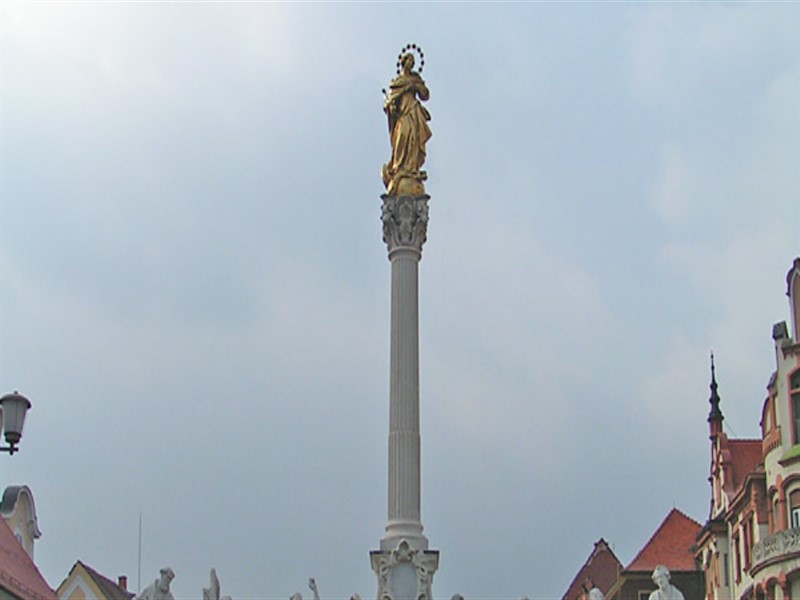
Mariborski grad
The next must stop is the castle of Maribor (Mariborski grad). I assure you that this fortress will not be the most beautiful and impressive you will ever see, but it is an admirable monument to the city. It was built by Friderik III between 1478 and 1483, with the aim of strengthening the northeastern part of the wall, and was later converted into a rich feudal residence. Inside you can visit the Regional Museum of Maribor (Pokrajinski muzej Maribor), with the main room in the castle being the Festive Hall. The museum hosts archaeological and ethnological collections of the Maribor region, which aim to spread the cultural heritage of the place. Admission costs 5e.

Right next to the castle, you will find a special statue, the Monument of National Liberation (Spomenik NOB), also known as "Kodžak" among the locals. This global bronze monument was erected in 1975 and was the work of local artist Slavko Tihec, paying tribute to those killed by the Nazis during World War II for their resistance to the occupation. Walking around it, you will be able to see the public announcements about the executions of 667 people, who were sentenced to death by German forces.
Frančiškanska cerkev
In my personal opinion the most beautiful attraction of Maribor is the Franciscan church (Frančiškanska cerkev), which is dedicated to the Virgin Mary. The impressive Red Church was built on the foundations of a Former Capuchin church, from 1892 to 1900, in neo-Romanesque style. It has three entrances, which are decorated with stones and impressive mosaics and has two belfries 52 meters high. The main gate, which is also the most richly ornamented, has a mosaic in the shape of the moon, showing the Annunciation of Mary. According to the legend, those who enter and pray in the temple, after their death will also see the heavenly door! Admission is of course free.
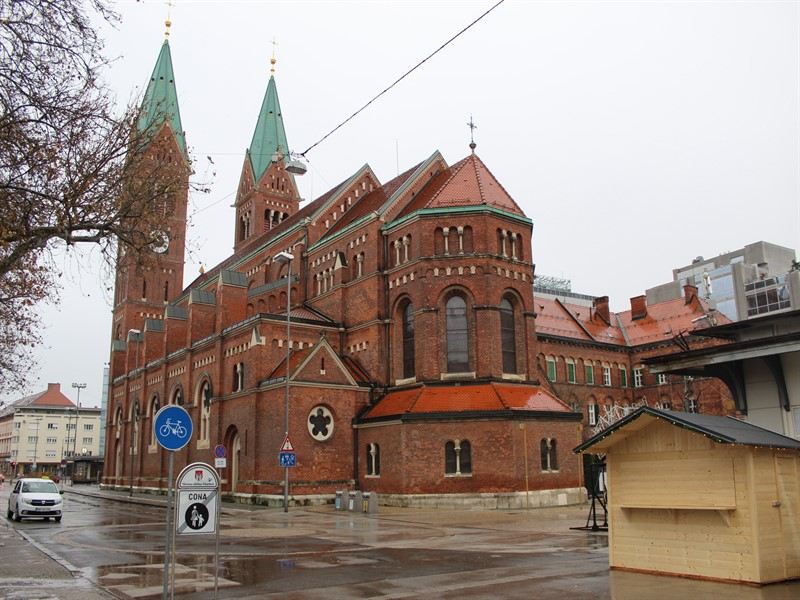
Drava
The city of Maribor is crossed by the Drava River. It is essentially a tributary of the Danube, which forms the natural boundary between yesterday and the Old City and today and the new. The best way to cross it is through the Old Bridge (Stari Most), which is the largest and most impressive in the city. The first bridge at this point dates back to 1913, and during World War II it was destroyed and later partially reconstructed. In the evening hours it is illuminated with blue colors, which create magnificent reflections on the river. If the weather is good, I advise you to climb on one of the boats that exist on the banks of Drava and see the city from another point of view, while if you are a hiker or cyclist you will find excellent trails on the embankment.
On the banks of the river is the Water Tower (Vodni stolp). It is a former stone fortress from 1555, built by the Italians as part of the fortification of the city of Maribor. Within this Pentagon tower operated the first winery of Slovenia, while it is impressive that we see it today essentially by chance, since it was about to be demolished. At the last moment, however, the tower was saved with the contribution of an anonymous resident of the city. Since 2009 the ground floor of the water tower has been converted into a cellar and is open to visitors. There you will be able to try a wide variety of local wines for all tastes, while if you are lucky you can achieve an event inside.
Old Vine House
This place is a good reason to visit Maribor. It is home to the most elderly vine variety in the world, which still has fine fruit. I am referring, of course, to Žametovka or Modra cavčina, which according to the Guinness Book of Records is over 450 years old! The old vineyard was planted in the late Middle Ages, when the city was besieged by the Turks and survived despite the wars, fires and weeds left by the rest. In fact, it is so important for the region, that it has its own anthem!! In the Old Vine House, you will have the opportunity to taste wines from this variety and to learn everything about it. Prices start at 5.70e for three wine samples and reach 15.70e for five.
Mestni Park
If you want to leave behind the noise of the city and take a walk in nature, then the city park (Mestni Park) is the solution. It is the largest in Maribor and is located in the northern part of the city, occupying an area of five hectares from the forested hills of Calvary to the Pyramid. It is specially landscaped with three lakes, an aquarium, a botanical garden and playgrounds, while many of the park's trees are over 140 years old and, since 1976, the area has been protected as a monument. It is a popular promenade and meeting place for residents of every generation and a welcoming spot for all visitors to this city.
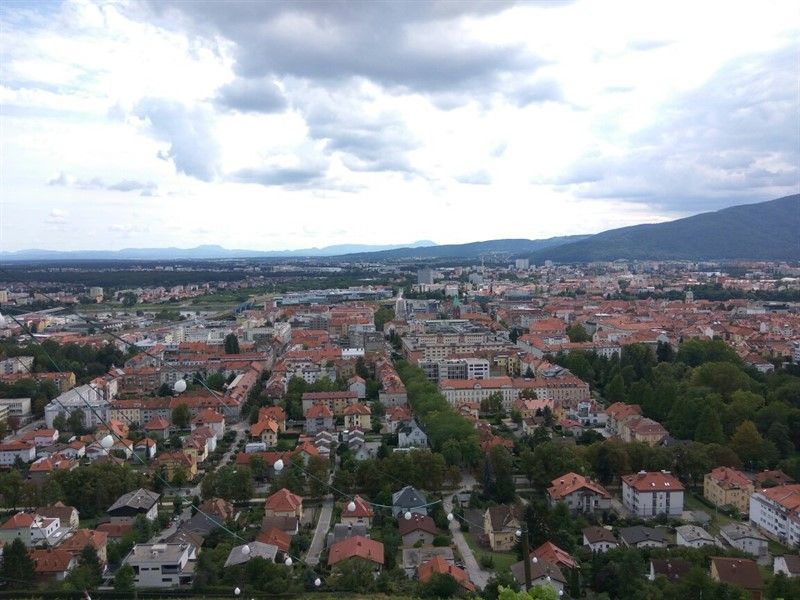
As I mentioned above, one of the two hills that stretches the park is called Pyramid. If you were expecting a real pyramid in Maribor then you will probably be disappointed. The pyramid (Piramida) is a low hill (386 meters altitude), about fifteen minutes from the center and offers panoramic views of the city. But where does the name come from? In the 12th century the Noble Spanheim family created in this location a castle, which was for many centuries the pride of the area but it collapsed in 1790. From the ruins of the castle a stone pyramid was built, which gave the hill its name. In 1821 the pyramid was replaced with a classicist Chapel, containing a stone statue of the Virgin Mary.
The museums
Apart from the Regional Museum, which is located inside the castle and which I mentioned above, in Maribor, you will find other interesting art spaces.
First and best is the Museum of National Liberation of Maribor (Muzej narodne osvoboditve Maribor). These admittedly beautiful building houses photography exhibitions and other 20th-century artifacts that tell the story of the city. From industrial Maribor to the turn of the century, to Maribor during World War II. Admission to the museum costs 3e.
The synagogue of Maribor (Sinagoga Maribor) is also worth a visit. It is essentially a former synagogue, which now functions as a museum. This particular synagogue is one of the best preserved in Europe and only the second to be saved throughout the country. Since 2001 it has been operating as a cultural exhibition hall dedicated to the history of the Jewish community of Maribor. Admission costs just 1e.
How to go
Unfortunately, there are no direct flights from Thessaloniki to Maribor, so your options are two. The first is to get to the city by air by making two stops in between (which I do not recommend), and the second is to choose a flight to Ljubljana or Vienna and from there go to Maribor by train or bus. This way you will save both time and money.
Where to stay
Maribor is a small town and not at all touristy, which means cheap accommodation. What the city has to offer is on the left side of the river, in the old town, so it would be wise to find something around there. My suggestion is the UNI Youth Hostel. It is a hostel that also offers private rooms in the most central part of the city (next to the castle), while it has a very nice common area with billiards, TV and other games.
How to move
I'm sure that you won't need any public transport, since everything in Maribor is within walking distance. If, however, for any reason you want to use one, then you should know that in Maribor there are only buses. Tickets are usually purchased by the driver and cost 1,10e, while there are also selected tobacconists in the city being cheaper. However, in case of need, I would suggest you call a taxi, since it is very economical in this city.
What to eat
The cuisine of Maribor and southern Styria in general is famous for pork, cabbage, turnips, beans, eggs, sour cream, cottage cheese, various types of cereals and, of course, potatoes. The dishes are usually accompanied by a white glass of wine, or as the locals call it "shpritzer", it is a mixture of wine and sparkling mineral water, which is a very popular in the area. So to try these local delicacies, I suggest you visit Rozmarin. If you still want to taste something more "Italian" then do not miss Pizzeria Ancora, while Patrick’s Pub is very good for beer and fast food. I also suggest you try the fine wines of the Slovenian vineyard in the modern vinotekas of the center. Finally, for coffee and breakfast I recommend Nana.
Useful information

In Slovenia we travel with a passport or a new type of Police ID, where the details are indicated in Latin characters.
In Maribor the language used is, of course, Slovenian. The majority, however (especially young people), speak English, so ask for clarification in English.
The currency of the country is the euro.
Maribor is an hour behind Greece (GMT +2).
In Maribor there is no Greek embassy or consulate, so if you need anything you should contact the nearest one, located in Ljubljana, at 14 trnovski Pristan Street and the phone is + 3861 4201400.
Getting to and from Maribor Airport is exclusively by train, while a good choice is the taxi, since it is only ten kilometers away.
Maribor is a city with high levels of rainfall and snowfall. It is characterized by a typical continental climate and features cold winters and cool summers. The ideal time to visit the city is the end of spring to the beginning of summer.
Recommended Excursions → Graz, Ljubljana, Lake Bled
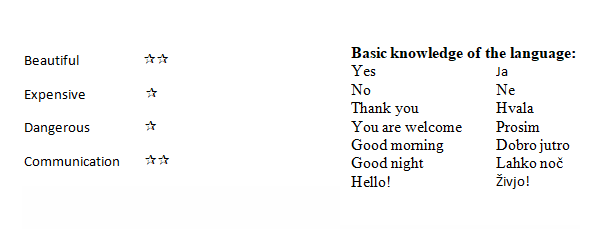
If this article seemed interesting or contributed to your quality information, then you can like my facebook page: o_thessalonikios or follow me on instagram!
Mouzakidis Pantelis
